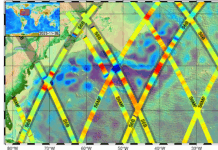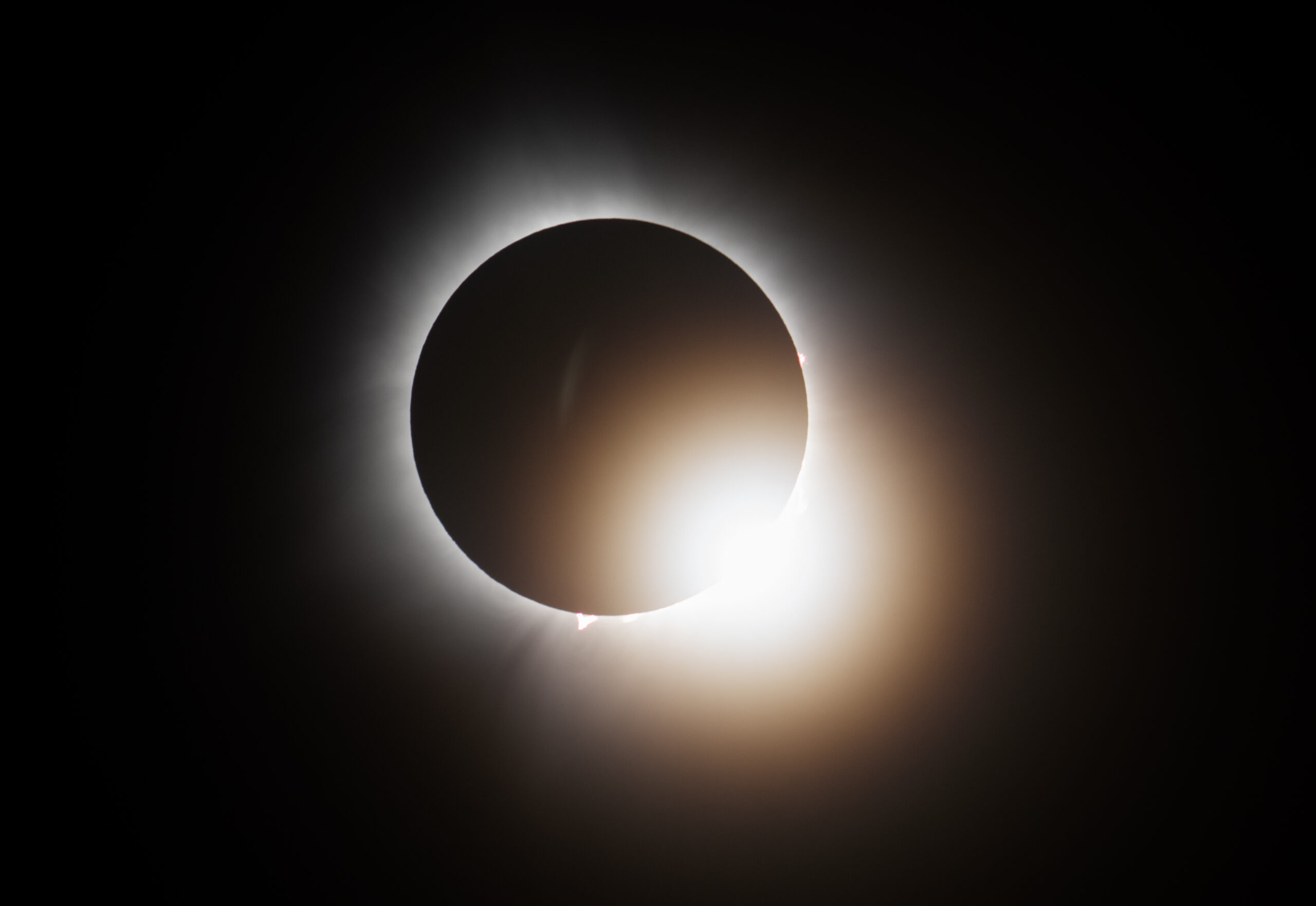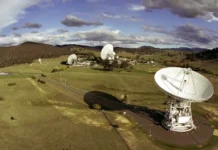Capturing the Celestial Event: The 2024 Total Solar Eclipse
In an extraordinary celestial event that captivated millions, a total solar eclipse unfolded on April 8, 2024, across a narrow stretch of North America. This awe-inspiring phenomenon was beautifully captured by NASA photographer Joel Kowsky at the Indianapolis Motor Speedway in Indianapolis, Indiana. Let us delve into the details of this rare event, what made it special, and its significance in the world of astronomy.
A Path Across Nations
The total solar eclipse of 2024 presented a unique opportunity for observers across North America as the moon passed directly between the Earth and the sun, casting its shadow over the continent. The eclipse began its journey on Mexico’s Pacific coast, traversing a narrow path across the United States before finally ending on the Atlantic coast of Newfoundland, Canada. This path provided a perfect alignment, allowing a total eclipse to be visible in these regions.
For those outside the narrow path of totality, a partial solar eclipse was visible across the entire North American continent, extending into parts of Central America and Europe. This widespread visibility made the event accessible to a large audience, providing a fantastic opportunity for people to experience and appreciate the wonders of our solar system.
Significance of the Image
The image captured by Joel Kowsky is not just a photograph; it is a moment frozen in time that highlights the beauty and grandeur of celestial mechanics. This particular photograph was recognized by NASA’s Headquarters photo team as one of the best images of 2024, a testament to its striking composition and the skill required to capture such a transient and dynamic event.
The image showcases the sun’s corona, a glowing halo of plasma that becomes visible during a total solar eclipse. This rare sight is one of the most sought-after views for both amateur and professional astronomers, as it allows a glimpse into the outer atmosphere of the sun that is usually obscured by its bright surface.
Understanding Solar Eclipses
To fully appreciate the significance of a total solar eclipse, it is essential to understand the mechanics behind it. A solar eclipse occurs when the moon passes directly between the Earth and the sun, blocking the sun’s light and casting a shadow on Earth. There are three types of solar eclipses: total, partial, and annular.
- Total Solar Eclipse: This occurs when the moon completely covers the sun, as seen from Earth. It results in a brief period of darkness during the day, known as totality, which can last up to a few minutes depending on the location.
- Partial Solar Eclipse: Here, only a portion of the sun is obscured by the moon. This type of eclipse is more common and can be seen over a larger area than a total eclipse.
- Annular Solar Eclipse: This happens when the moon is too far from Earth to completely cover the sun, resulting in a ring-like appearance of the sun’s surface, known as the “ring of fire.”
The Importance of Eclipses in Astronomy
Solar eclipses have been significant throughout history, not just for their visual spectacle but for the scientific insights they provide. Eclipses have allowed scientists to study the sun’s corona, contributing to our understanding of solar winds and the sun’s magnetic field. They also offer a rare opportunity to test theories of relativity and improve our understanding of celestial mechanics.
In the past, solar eclipses have helped astronomers confirm predictions about the sun’s atmosphere and even measure the bending of light, a cornerstone in the theory of general relativity proposed by Albert Einstein.
Preparing for the Next Eclipse
For those who missed the 2024 eclipse, fear not; there are more opportunities to witness this celestial wonder. The next total solar eclipse visible in North America will occur on August 23, 2044. Planning ahead is crucial, as locations within the path of totality can expect an influx of visitors eager to experience the event.
How to Safely Observe a Solar Eclipse
Observing a solar eclipse requires caution to protect your eyes from damage. Here are some safe ways to view an eclipse:
- Eclipse Glasses: Special-purpose solar filters, popularly known as eclipse glasses, are essential for viewing the sun directly. Regular sunglasses are not safe for this purpose.
- Pinhole Projector: This simple device allows you to project an image of the sun onto a surface, letting you view the eclipse indirectly.
- Solar Filters for Telescopes and Binoculars: If you want a closer view, ensure your telescope or binoculars are equipped with proper solar filters.
The Cultural Impact of Eclipses
Beyond their scientific value, solar eclipses have had a profound cultural impact throughout history. Many ancient civilizations recorded eclipses as significant events, often attributing them to divine intervention or considering them as omens. Today, they offer a chance for communities to come together in shared wonder and appreciation of our universe.
Conclusion
The total solar eclipse of April 8, 2024, was a spectacular event that showcased the incredible interplay between celestial bodies. Thanks to the efforts of photographers like Joel Kowsky, such moments are captured and shared with the world, inspiring both current and future generations. As we continue to explore and understand our universe, events like these remind us of the beauty and complexity that lie beyond our daily lives.
For more stunning images from 2024, you can visit NASA’s collection on Flickr to immerse yourself further in the visual splendor of this and other celestial events.
For more Information, Refer to this article.


































